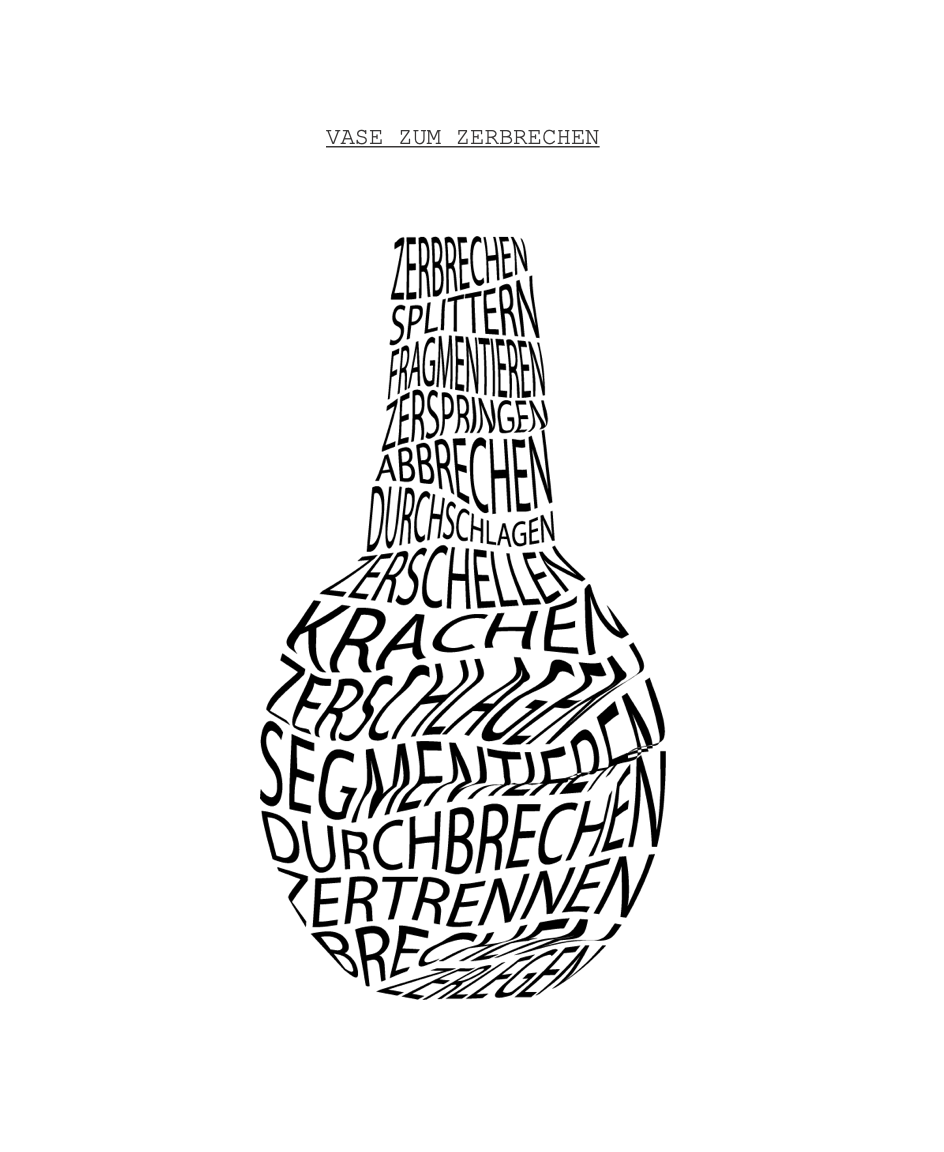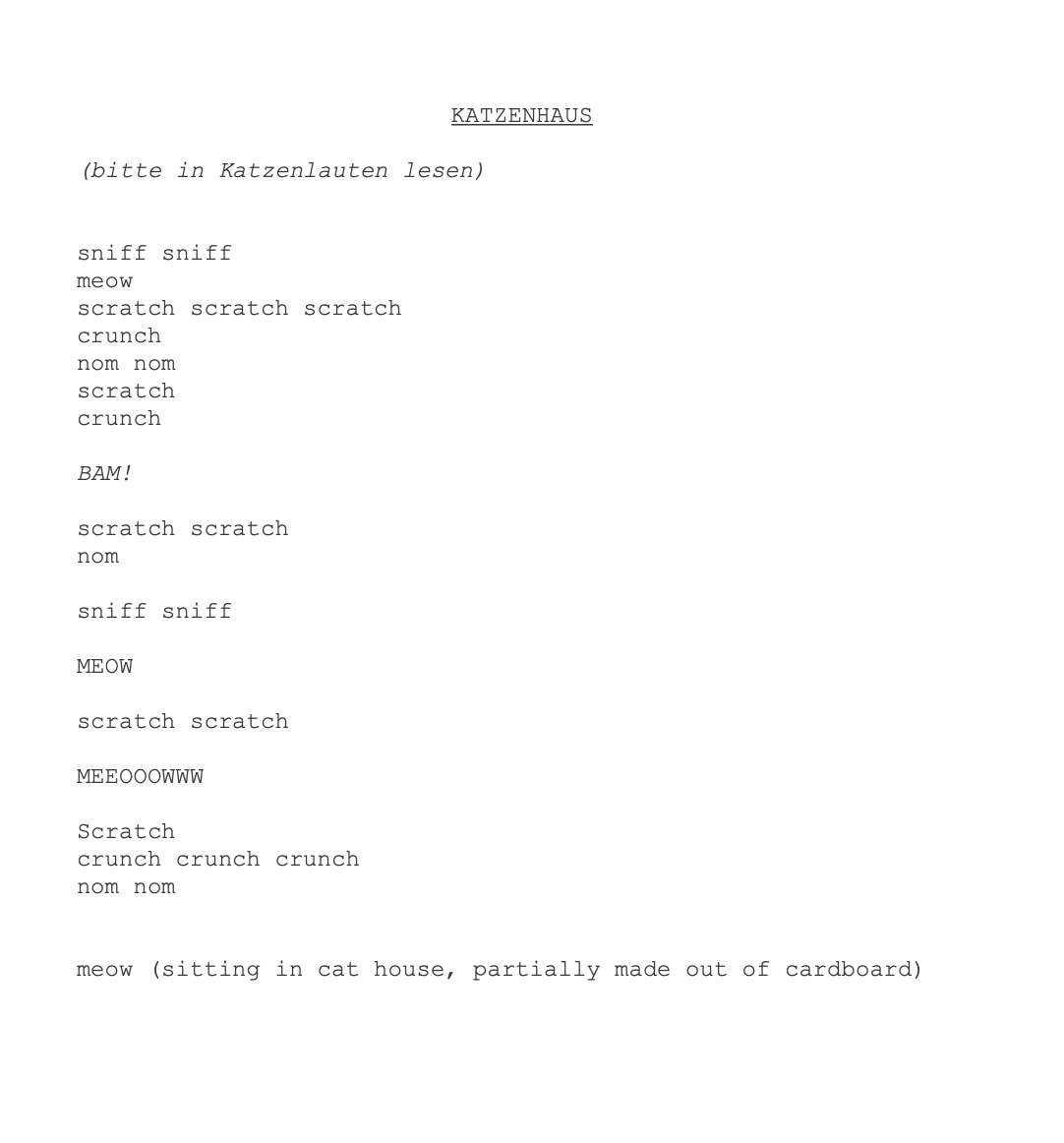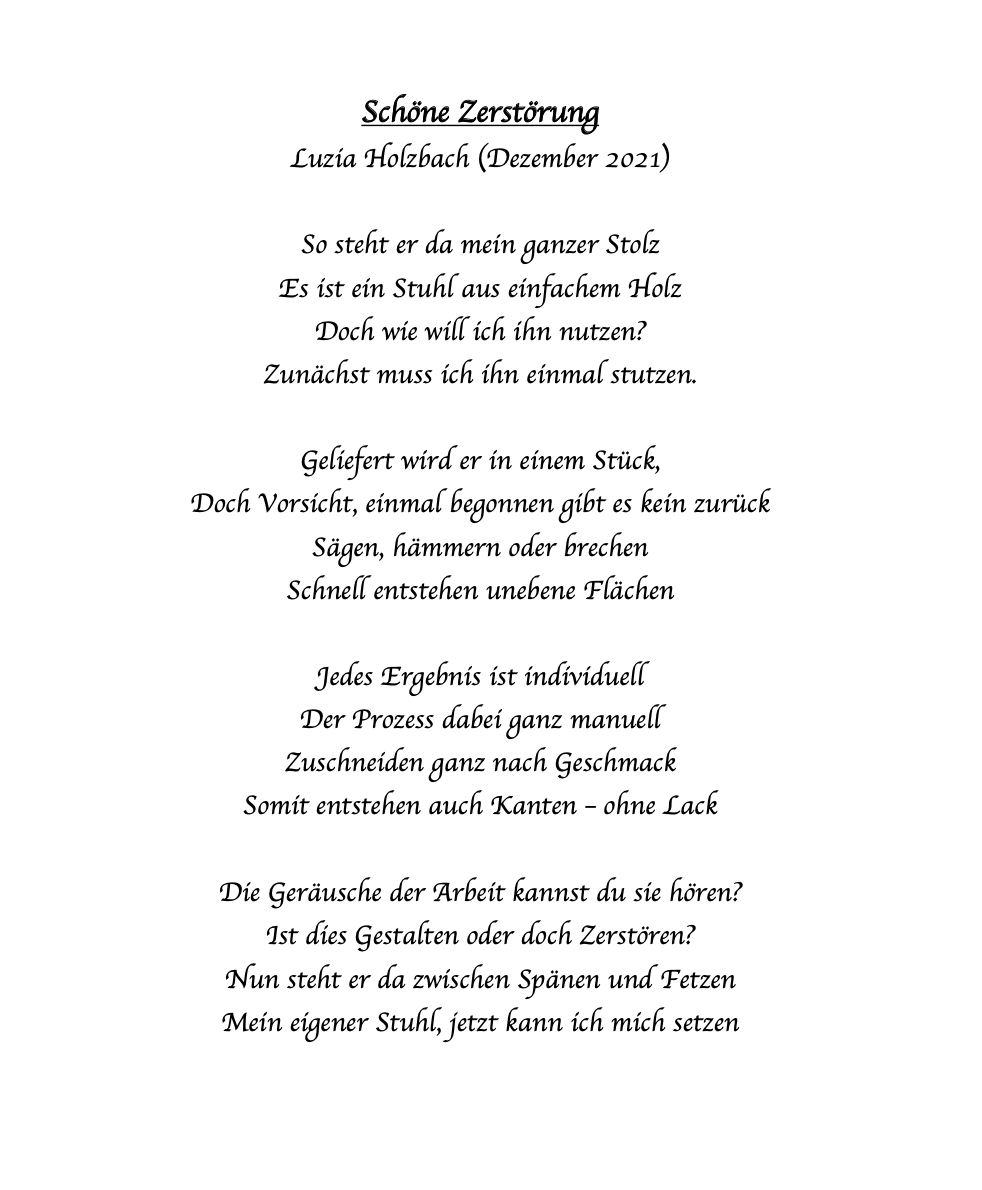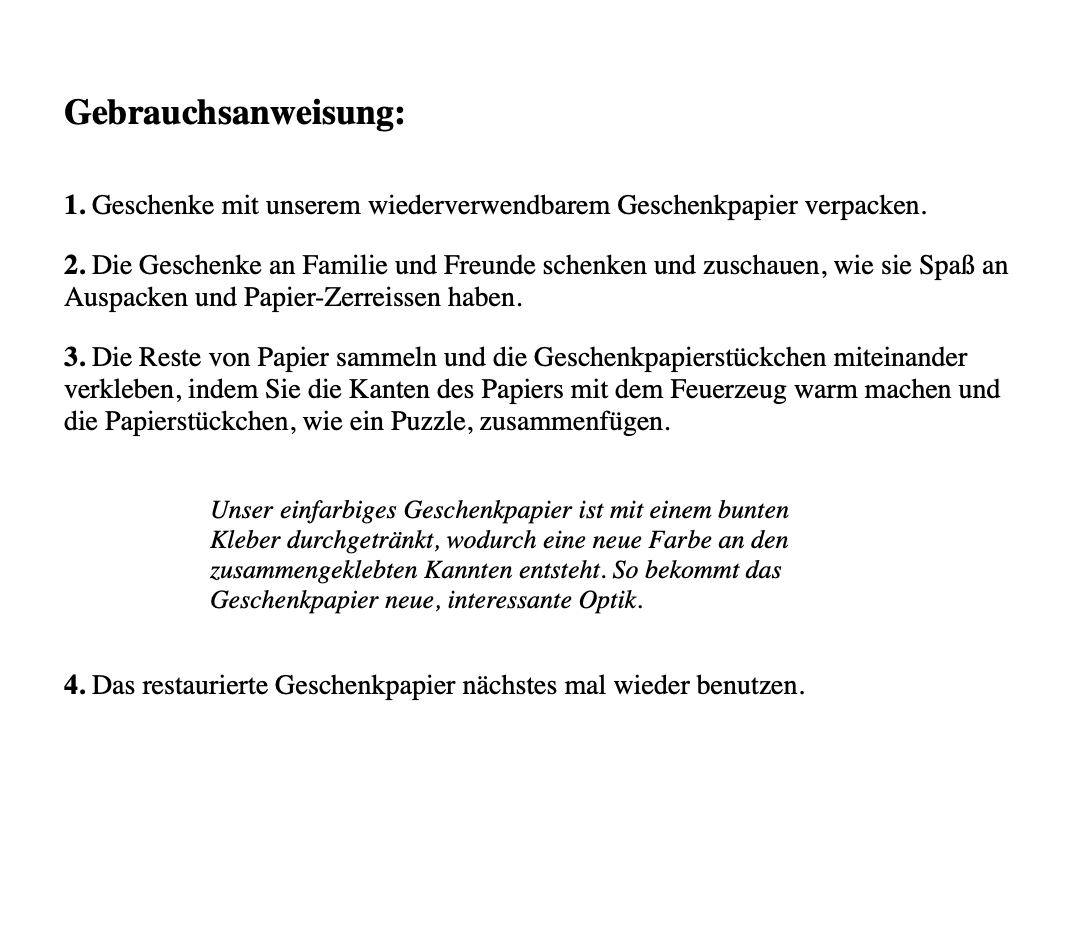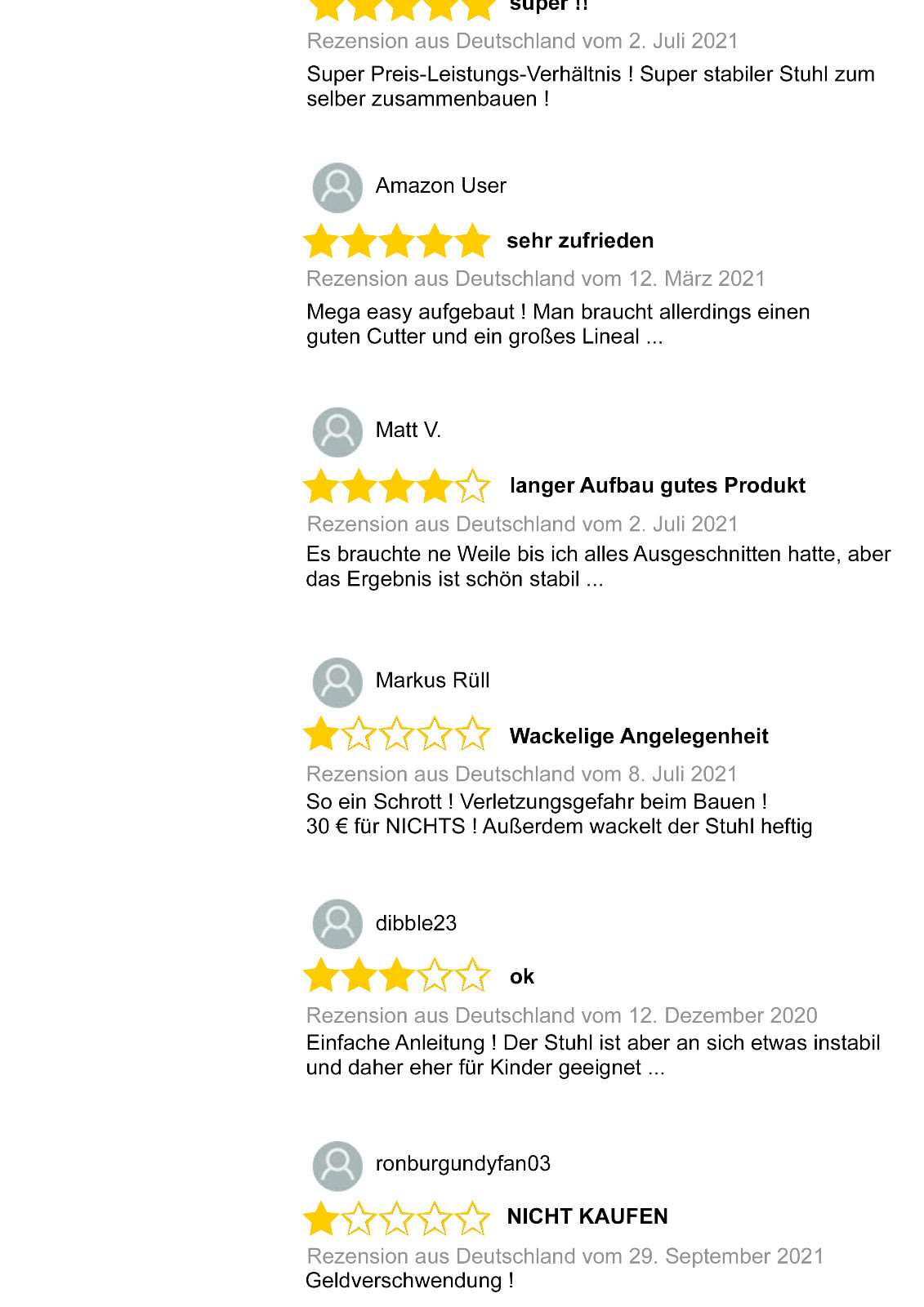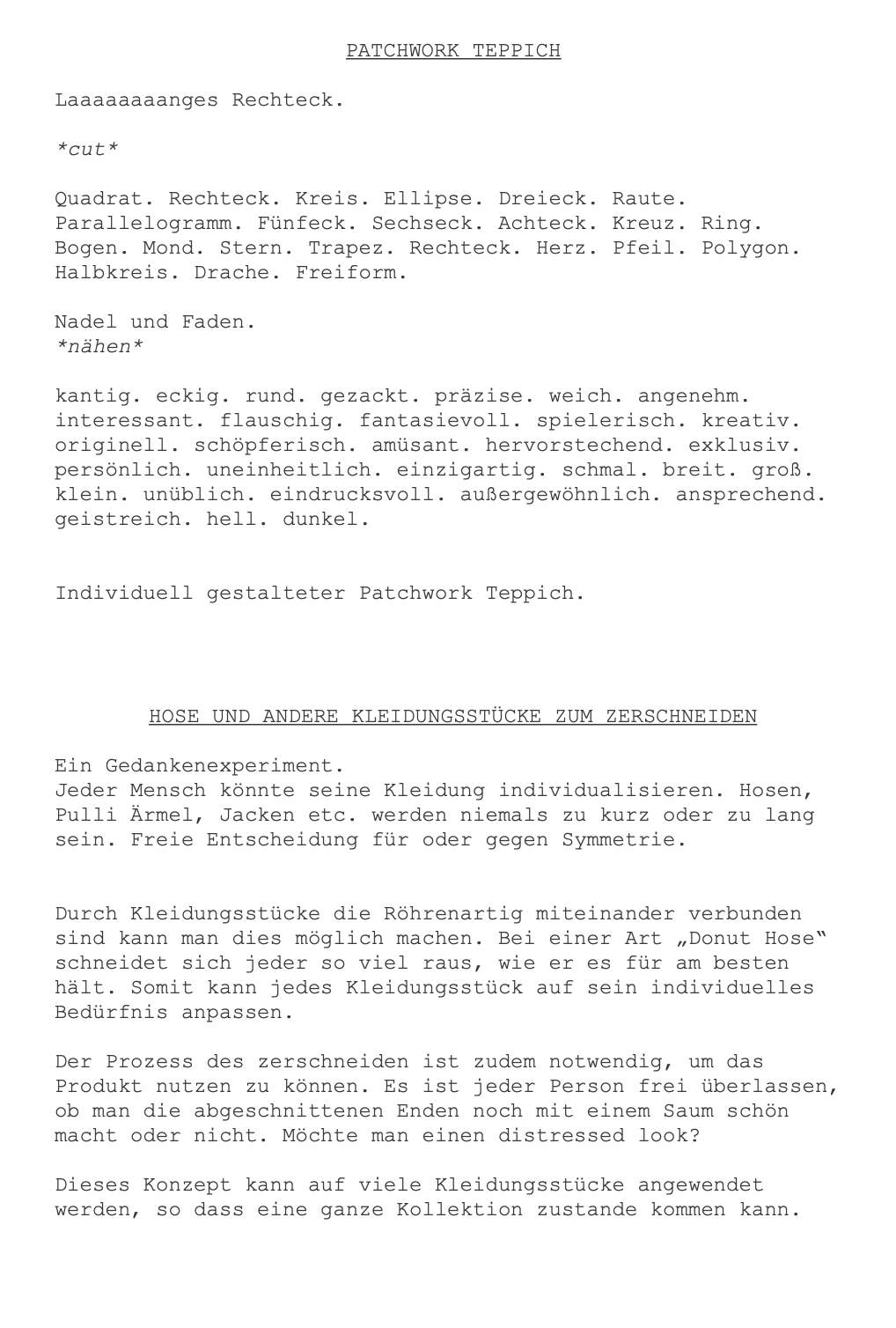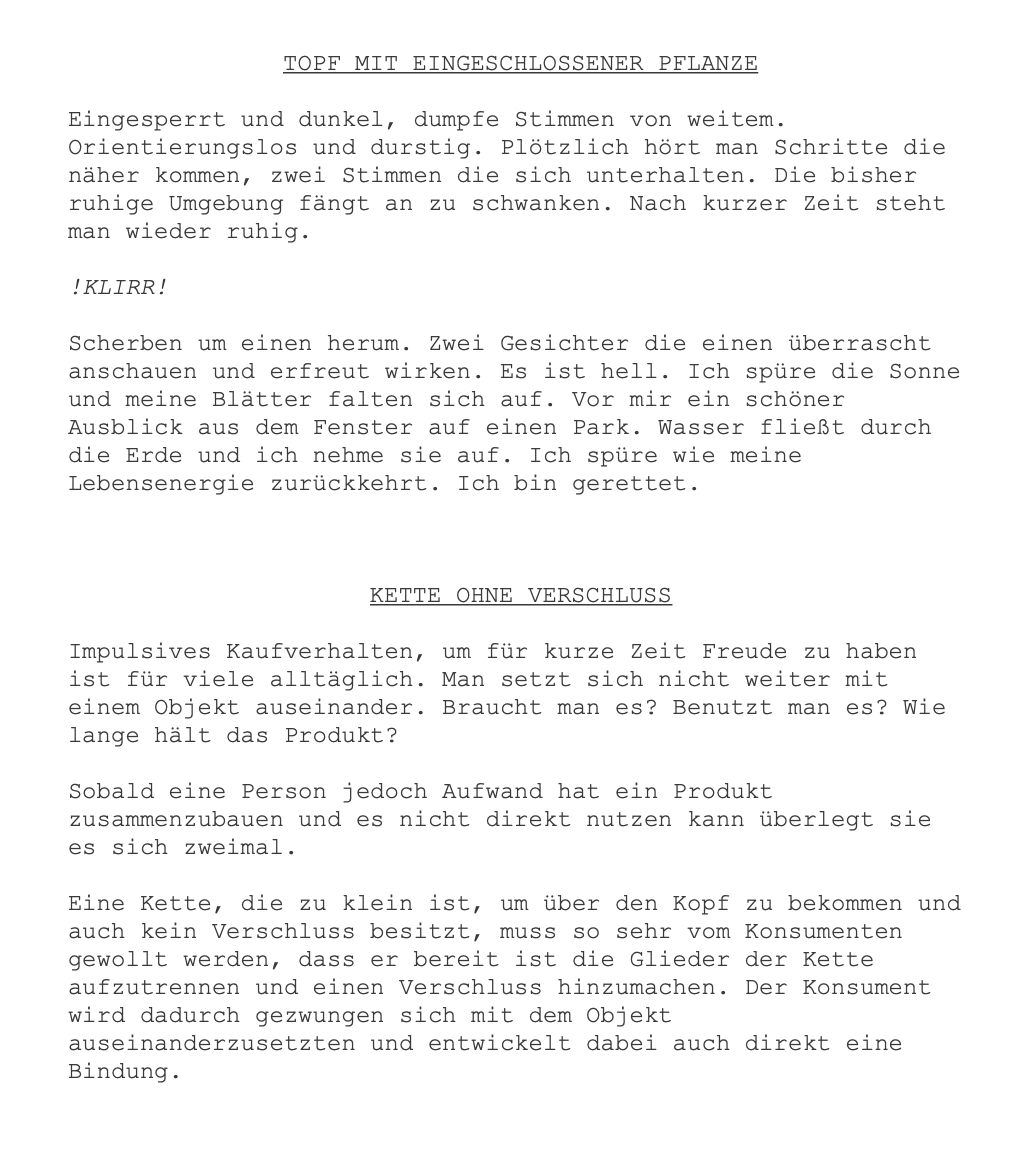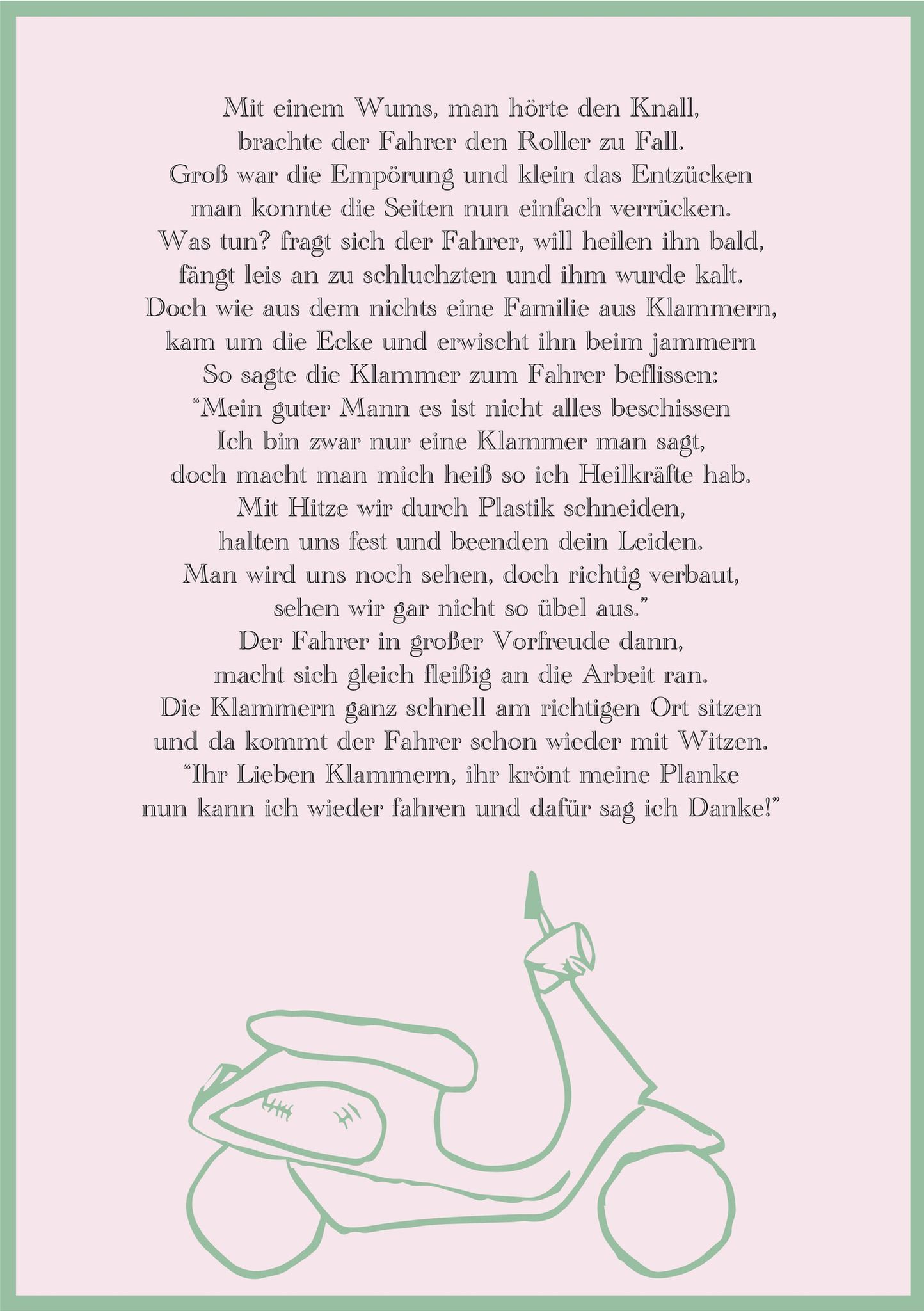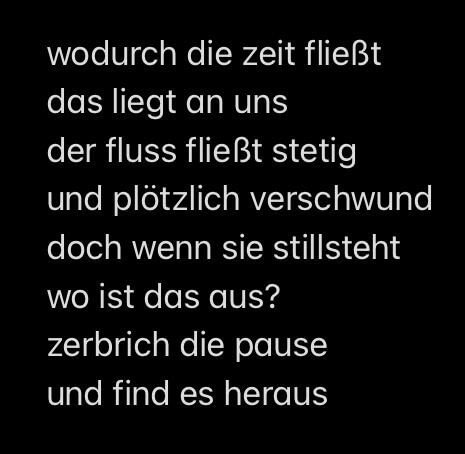In the fall and winter of 2021, I taught a product design course for first-year students at the Staatliche Hochschule für Gestaltung Karlsruhe. The goal of the course was for the freshmen to unlearn the rigidity and stiffness they may have acquired at school, to learn how to listen to their bodies, and to introduce them to a body-first design process - designing objects that choreograph the user in a particular way through their idiosyncrasies.
The course is loosely based on my 2017 essay, The everyday movement of the technologically extended body.
The students were:
Lisa Eigmüller
Cornelia Herzog
Luzia Holzbach
Jinhyung Hur
Niklas Kudlek
Kateryna Kakotkina
Jan Oberschachtsiek
Vivian Reuter
Moritz Schneider
Lorenz Stein
Lilith Stumpf
Wei Wang
There were 14 weekly 3-hour sessions, each session focused on a specific new topic. I took some notes of what we were doing during this time and decided to share them here:
№1
Warm-up: voice, being loud and speaking in a low voice. Standing in a circle and being louder than the person to the left.
Topic: exploring the spaces of the university, since the building itself is very new to most participants. Take 20 minutes to explore the space, find a place you particularly like and find/invent a gesture or a pose that suits the place well. We then went to each found place and tried out the gesture/place combination as a group.
№2
Warm-up: balancing head on the shoulders like a 3-year-old; writing your name on white duct tape and going swiftly through the room, greeting each other loudly when you meet each other.
Exploration: I brought large 1 meter long stalks of cattail grass to the class. Each person could take a few and expand their bodies and senses. Where would you put them? How do they change perception? Are they just for perception (like cat whiskers) or can they be used actively?
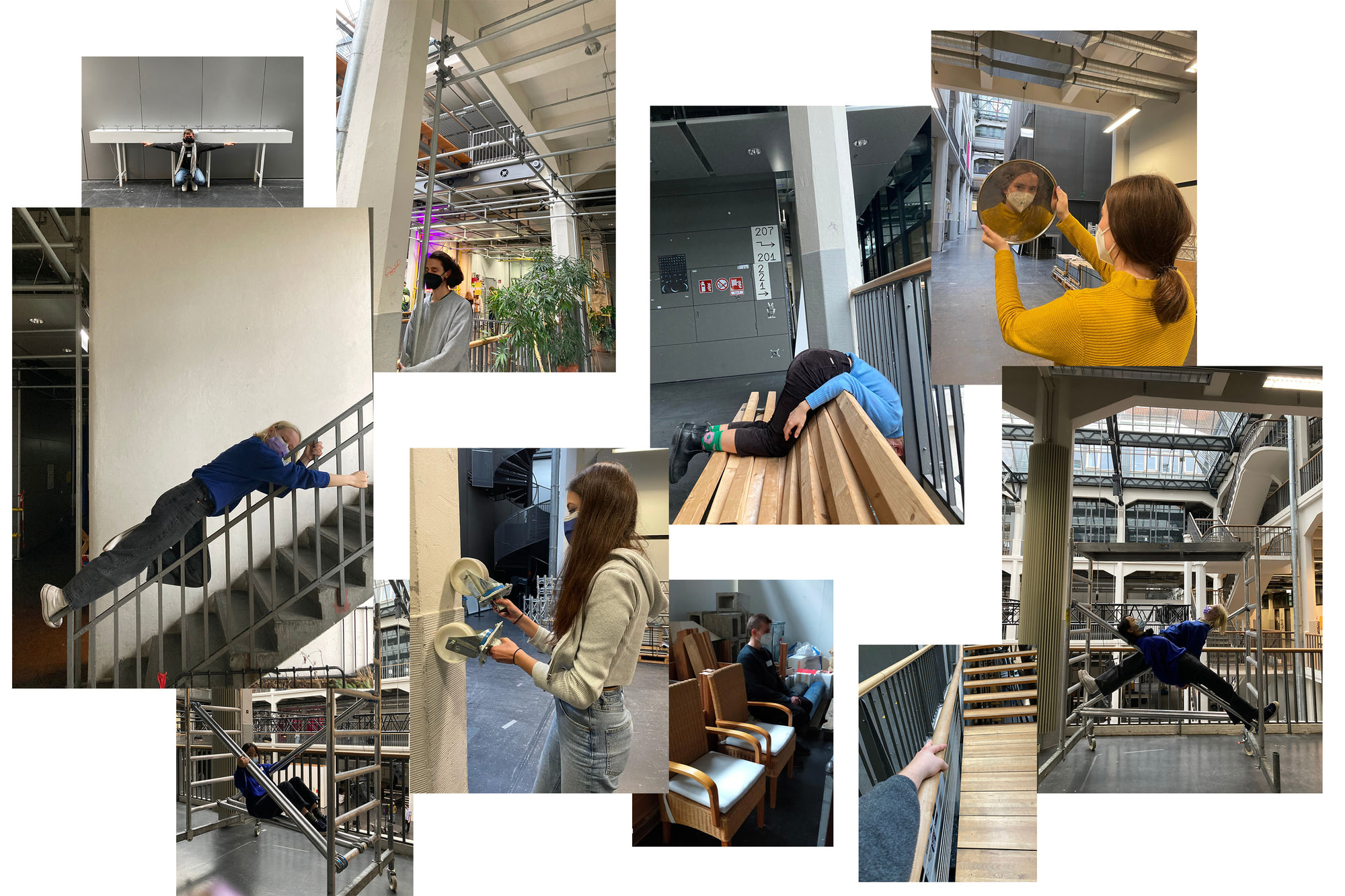
Topic: exploring how tools extend our bodies. Go through the university and find some architectural detail / trash / furniture and extend your body through it. Try to find words to talk about how it felt.
№3
Warm-up was based on eye exercises; imagine that your eyes are positioned very deep inside your head, not on the outside. Look up and walk around the room trying not to bump into each other.
Group exercise: one person tries to look directly into their partner’s eyes, as the partner averts their gaze. Switch roles.
Second step: One person tries to look away while the person looking directly into the eyes tries to actively move where the first person is looking.
Playful exploration of being seen / being seen too much / being ignored.
Topic: Chindogu, useless inventions. Mostly useless inventions that try to solve a social/corporeal pain with technical means. Fascinating in their useless over-engineering. Each of us should develop 7 proposals for Chindogu and choose one to build a model for next week.
№4
Warm-up: imagining an animal. Walking around the room with while taking on 1/10 of the qualities of that animal. Exploring what changes.
Then: walking around speaking gibberish, expressive but meaningless sounds. (Was not so easy).
Then: Pointing at objects and calling them by the wrong name. Like pointing at a chair and saying ‘River’ out loud. (Keith Johnstone exercise, worked well).
Topic: Presentation of Chindogu models, gathering the ideas and models.
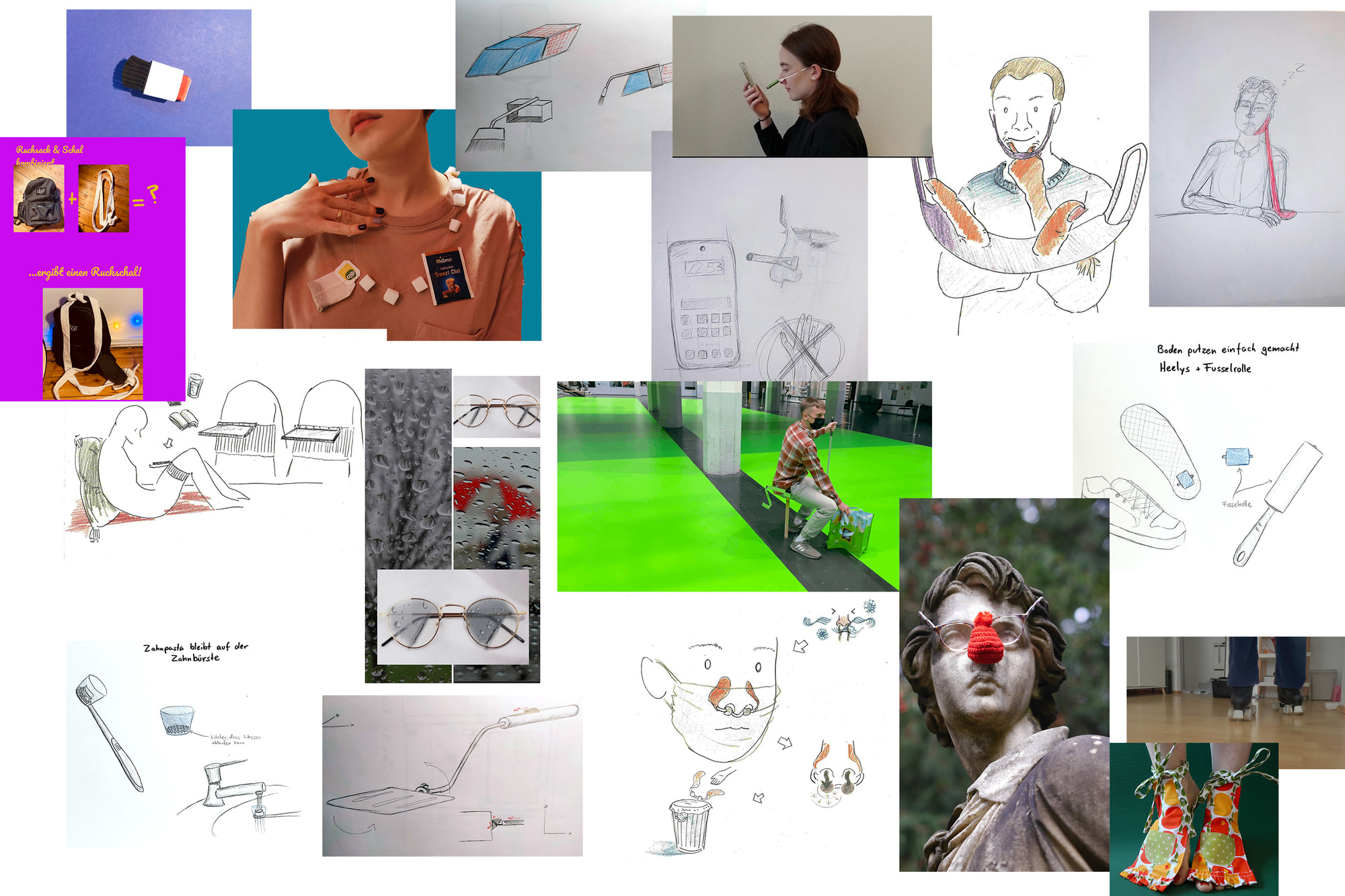
№5
Warm-up: Very slow movements of the head, then the shoulders, then each part of the body ending with the toes. Doing it again, but this time trying to do it unnoticeable, with tiny movements. Created a great atmosphere of highly concentrated but barely moving bodies.
Then: Exercise in pairs, using way too much body language, facial expressions and gestures to tell your partner about your day. Really overdo it. Then we changed roles. Worked well and we had a good discussion about the difficulties some people had.
Then: Taking up space around you with your gaze. Using your eyes to take space, own that space.
Then: In pairs, walking towards each other slowly, until one person says ‘stop!’ when the boundary of personal space is reached. Talked about the different but mostly similar distances everyone reached. Repeated the exercise but this time not trying to take up space with the gaze.
Then: A group exercise in miming an object. One half of the class agrees on an object they want to build, then someone mimes building the basic of it. The others go to the empty space where the person mimed it and mime adding other parts to it. The group that watches on tries to sketch the object being built. We then repeated the exercise a few times, sometimes not agreeing beforehand on what is being built.
Talked about the importance of documentation and the impossibility of a perfect reproduction. Talked about websites and an easy way to build them. Homework: create a website for the chindogus you sketched/made. Here are some:
https://mmm.page/jinhyung.main
https://mmm.page/lilith163
https://mmm.page/obshistory.main
https://mmm.page/lorenz.main
https://mmm.page/cornelia
https://mmm.page/kakotkina
https://mmm.page/lhlz.main
https://mmm.page/ruesselwaermer.main
https://mmm.page/nikolauskudlek
https://mmm.page/wiggleagainstboredom
№6
Class was held online.
Topic: introduction to defensive architecture, showing different kinds of seating arrangements in the city that disallow their use for lying and sleeping, as well as anti-skateboard designs.
Exercise: go for a walk for 30 minutes and find approaches that rethink the use of public space that allows (or disallows) specific things.
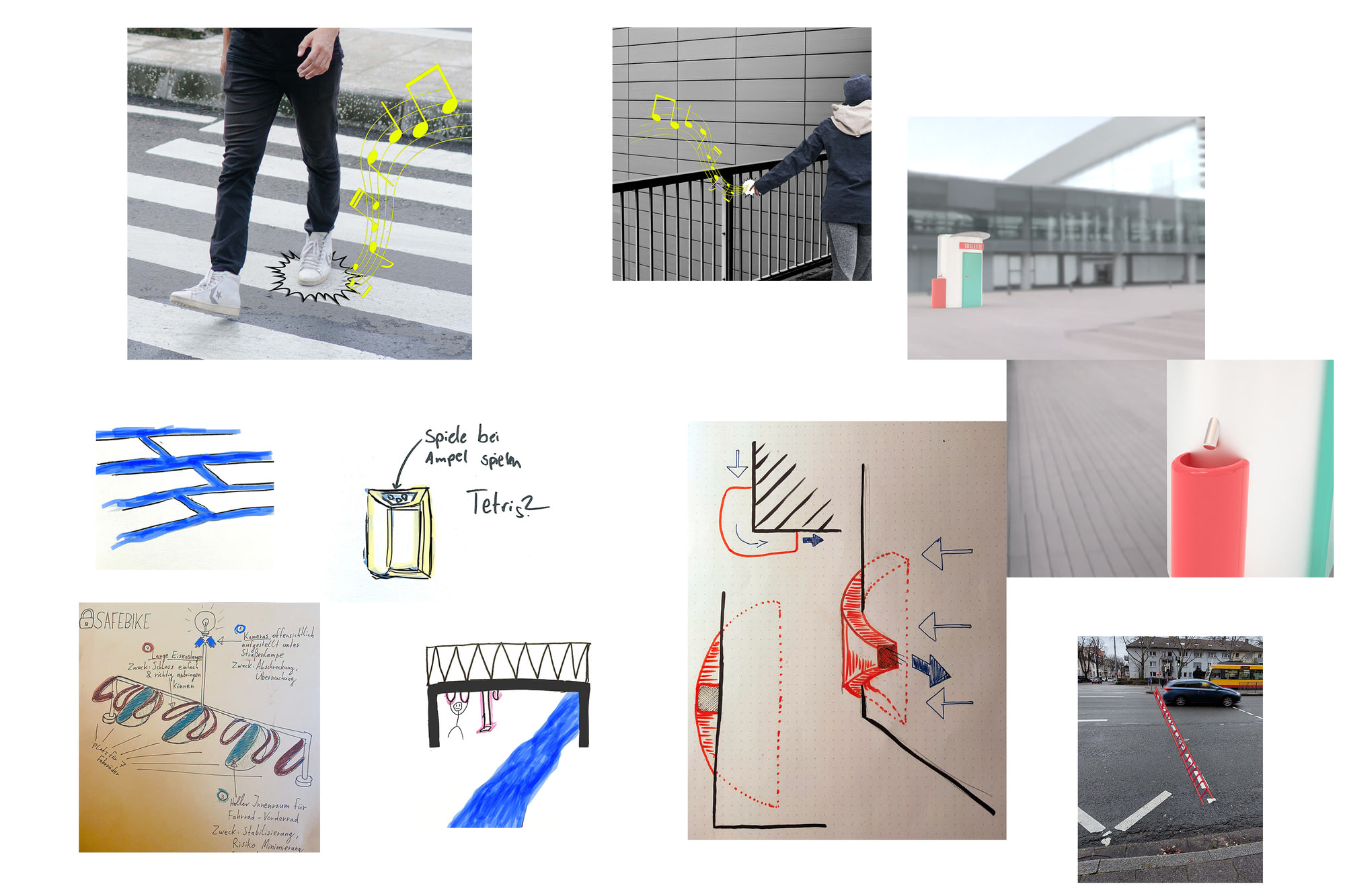
We then talked about the findings and as homework the ideas should be presented as websites. Here are some:
https://mmm.page/momomo
https://mmm.page/obshistory
https://mmm.page/kakotkina.defensive_architecture
https://mmm.page/lhlz.ampel
https://mmm.page/lorenz.public_toilets
https://build.mmm.page/jensmartin.main
https://mmm.page/lilith163.baskettoshare
https://mmm.page/cornelia.choreographie_urban_space
№7
Class was held online.
Topic: Ikea effect and kintsugi. How objects gain subjective value by being built or by being mended, by having a history.
Exercise: build an object out of discarded material (should have no text on it, and possibly no flat surfaces) and give it a name. Later, slowly push it off the table to see how you want it to break or not, how attached you feel to the object, just a few minutes after creating it from trash.
Then we talked about the IKEA effect - things that are partly user-created get a lot more user value. And kintsugi - how things can gain value after being destroyed and repaired.
Each participant then gathered ideas for objects that get created by the user (and gain IKEA effect) or objects that have to be destroyed and then mended/recreated by users to get kintsugi effect.
№8
Class was held online, as it is two days before Christmas and half the class is at their families.
The homework was to find ways to use text as a medium to talk about the kintsugi/ IKEA effect project ideas. Lots of interesting texts and even concrete poetry.
At the end of the year, we talked about what worked well in the seminar. Some feedback:
- Many different approaches to try, design, document
- Walking around the city and asking what else might exist in that particular place was interesting and helpful.
- collected many ideas each time, learned not to be afraid of too many ideas
- asking how things felt was good (doesn’t happen in other seminars!)
- Sometimes hard to get ideas
- not all body exercises work (voices are hard)
№9
Topic was slowness - objects that would cause slowness – and how to build them.
Exercise: From a standing position, move down to the floor, to a sitting or lying position, but take 7 minutes. Rise in 1 minute. This worked very well, the times to get down and up were amazingly precise, even though there was no clock to tell the time.
Then: walk slowly around the second floor of the university, at 20% of normal speed. Stay silent and pay attention to each step and the space around you.
This spontaneously changed to 5% speed instead, silence was hard to keep.
Then: Ask people to form trios. Two of the people will stand close to each other and the third will stand a few meters away facing them. The pair will begin to move their outer arms slowly, and the third person’s task is to mirror these movements with her arms. After a while, switch roles so that each person is mirroring the movement.
Lorenz gave an impromptu presentation on his thoughts about the spaces in between. Had a good discussion.
Everyone collected slow ideas for slow objects. Also talked about a possible publication suggested by Moritz.
№10
Worked with huge back pain. Remained seated the whole time. Fun.
Topic: publication and how to do it in a way that involves bodies.
Exercises: Soft eyes. Relax, perhaps slightly defocus your eyes, and walk around the room with relaxed eyes. See how it feels.
Then: find a person in the group and copy their movements in a slightly more exaggerated way. -> This works well as usual as people start to copy the copyist and there is an over-inflation of movement.
Then: walk around the university and every time you read something, change your body position or posture. -> The idea was to observe how much written text there is. The participants complained that they got disoriented and got headaches.
Moritz presented how he imagines a publication. Everyone collected ideas about how to read things differently, many ideas. Here are some:
*– Long format, endless paper strip – Print text on several pillows and the text only makes sense if you sort the pillows correctly – Text as a window tattoo to stick on
- Text on a towel that unfolds when placed in water – Text in 3D optics (possibly blue and red text on top of each other) -> change light color – Text that is covered by something that must be erased first (like on a lotto ticket) – Lines go all over the wall -> you have to walk in order to read – Puzzle book – Text becomes visible when you blow on it – an object you have to wobble so that you can read it – dirt sticks to the writing (e.g. large installation in public with people walking over it) – wash something clean so that the text appears – text appears through wear and tear (railings or statues in public) – through acoustic noises (like yelling at the mirror in that one installation) – by air humidity like breathing on it (or rain on the street) – Activation by heat/cold – Activation on contact with chemicals (contamination - e.g. as a safety precaution)*
№11
Topic: Status (in the impro theater sense), playing high and low status characters. Products for Status. Warm-up: Started with everyone walking around the room saying hello to each other. Some looked away immediately, some kept eye contact. Talked about how different it felt and what it did to the rest of the body.
Talked about improvisational theater. Showed a sketch and video of a US politician playing high and low status. Showed interview with Keith Johnstone talking about being seen on screen and not trying to be the best (it fails) but just doing a good job.
Did a partner exercise where people tried to explore how to play a little higher status, then tried a little lower status.
Spent the rest of the time working on the publication.
№12
Class was held online. Topic: Choreography of things. Talked about the bodily positions that things make us take. Like in a church, going through a very narrow door or some contraption that forces the believer to get on their knees in order to kiss the icons.
Spent most of the time discussing how to present our findings at the end of the semester.
№13
Topic: how to do the presentation.
Moritz showed the printed booklet. Looks great. The format is chosen so that in order to leaf through the booklet one has to really use the full range of motion of the arms, opening up the body of the reader. Beautiful inconvenience.
We then split in two groups to develop the ‘ideal’ presentation, then combined the ideas.
Exercise: Experimented with a benevolent gaze as a helpful way to deal with stage fright when presenting. Benevolent towards the audience.
Also did an exercise on authentic movement in pairs. Where one person just looks at the other while the second person explores how their body wants to move right now. Worked really well. Tried it with and without eye contact between the partners. Interestingly, it was harder for the moving partner to move without holding eye contact.
№14
Video of all the chindogu websites edited by Moritz, shown at the presentation.
The day of the presentation. The group presented their view of the seminar without my intervention and even integrated some exercises (repeating another person’s movement in an exaggerated way & mimicking the process of building something together).
Heartwarming to see this little celebration of the seminar.

